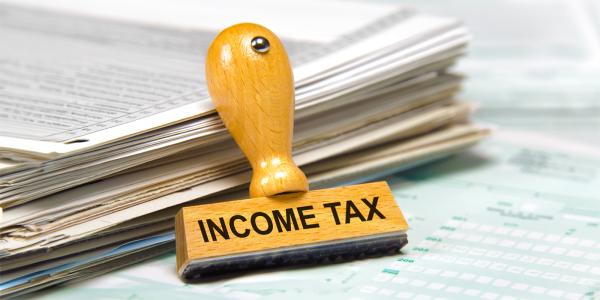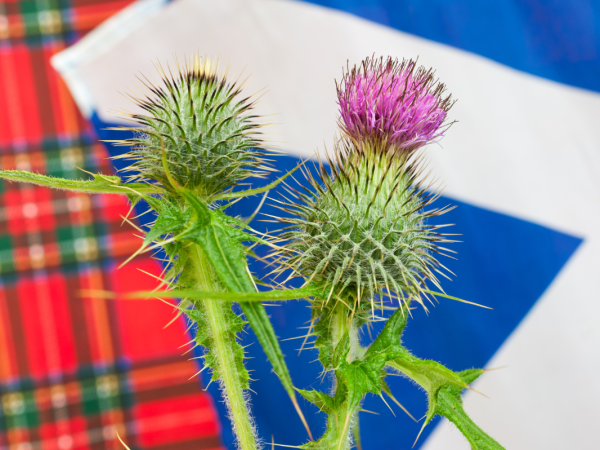Scottish income tax: more detail
If you are a Scottish taxpayer, you should understand Scottish income tax. We explain how Scottish income tax works in more detail, including how it is collected and how it affects things like gift aid donations and pension contributions. Scottish income tax has applied since 6 April 2017.

Content on this page:
How Scottish income tax affects how much tax you pay
The rates and bands of Scottish income tax for non-savings and non-dividend income are on the page Scottish income tax.
If you are a Scottish taxpayer in 2024/25, you may pay a different amount of income tax overall than you would pay if you were a taxpayer living in England, Wales or Northern Ireland with the same amount of earned income.
If you have earned income of less than around £28,867, you will probably pay less income tax than you would if you lived in England, Wales or Northern Ireland.
If you have earned income of more than around £28,867, you will probably pay more income tax than you would if you lived in England, Wales or Northern Ireland.
National Insurance contributions are not affected by Scottish income tax.
Interaction with UK income tax
The rates and bands of Scottish income tax are on the page Scottish income tax.
The rates and bands of UK income tax are on the page Tax and NIC rates and bands.
If you are a Scottish taxpayer, you may have to pay income tax according to both the Scottish rates and bands and the UK rates and bands. This may happen if you have earned income (Scottish income tax) and savings and/or dividend income (UK income tax).
In 2017/18, the only difference between the UK and Scottish rates and bands related to the higher rate threshold. This, together with reliefs such as the personal savings allowance and dividend allowance, meant that this was unlikely to affect you.
Since 2018/19, when a five-band structure of Scottish income tax was introduced, this is far more likely to affect you. A sixth band of Scottish income tax has been introduced from 6 April 2024.
The types of income to which Scottish income tax applies
Scottish income tax applies to non-savings and non-dividend income of Scottish taxpayers. So, for example, if you are a Scottish taxpayer, Scottish income tax affects the amount of income tax you pay on:
- employment income;
- profits from self-employment (including from sole trades and partnerships);
- rental profits;
- pension income (including the state pension); and
- taxable benefits.
Scottish income tax does not apply to savings income and dividend income. This means it does not affect the amount of income tax you pay on bank or building society interest or dividends.
The Construction Industry Scheme (CIS)
If you are a subcontractor, the payments you receive under the CIS may be subject to deductions – 20% for registered subcontractors; 30% for subcontractors not registered with the scheme. Whether you are a Scottish taxpayer or not, contractors make deductions at the UK rate – either 20% or 30% as appropriate. If you are a Scottish taxpayer, you are liable to pay income tax at the Scottish income tax rates on your earned income, including these CIS payments, and your final tax liability will be calculated through your self assessment tax return.
For more information on the CIS, see our page Construction Industry Scheme (CIS).
How Scottish income tax is collected
HMRC are responsible for the collection and administration of all income tax in the UK, including Scottish income tax.
Scottish taxpayers pay income tax calculated according to Scottish income tax rates and bands under the Pay As You Earn (PAYE) system or self assessment. For information on determination of Scottish taxpayer status, see our Scottish taxpayers page.
You are not able to see the split between income tax paid according to UK rates and income tax paid according to Scottish income tax rates on your payslip, form P60 or form P45. However, your annual tax summary (if you receive one) produced by HMRC shows the split. From 6 April 2017, if you do not have any savings or dividend income, you may not pay any income tax according to the UK rates and bands.
You should check carefully any notices or calculations you receive from HMRC, to ensure they have used the correct tax rates and bands. If you disagree, or are not sure that they have your taxpayer status correct, contact HMRC immediately.
Marriage allowance
The marriage allowance allows eligible taxpayers to transfer 10% of their personal allowance to their spouse or civil partner. This means the recipient of the marriage allowance benefits from a tax reducer, worked out as 20% of the amount of allowance transferred.
Scottish taxpayers who only pay tax at the starter, basic and intermediate rates of Scottish income tax (and if relevant the basic rate of UK income tax on savings income) are eligible for the marriage allowance. That is, Scottish taxpayers are eligible, provided they do not pay income tax at the higher, advanced or top rates of Scottish income tax and/or the higher or additional rates of UK income tax (if relevant).
Note that if a Scottish taxpayer pays some Scottish income tax at the intermediate rate of Scottish income tax (21%), the tax reducer provided by the marriage allowance is still only 20%.
Gift aid donations
If you are a Scottish taxpayer, any donations you make under gift aid continue to benefit from tax relief.
Gift aid for charities applies at the UK basic rate (currently 20%), regardless of whether or not the donor is a Scottish taxpayer. This means that the charity claims tax relief at 20% from HMRC on any donations you make under gift aid, even if you only pay tax at the Scottish starter rate of 19%. As with any gift aid donation, if you do not actually pay enough total tax (irrespective of the rate) to cover the tax relief that the charity claims, HMRC may ask you to pay the difference. There is more information on the page gift aid.
If you pay income tax at a rate higher than the basic rate, you can claim back from HMRC the difference between the rate you paid and the Scottish basic rate.
This means that if you pay tax at the Scottish intermediate rate of 21%, you can get an extra 1% tax relief.
If you normally complete a self assessment tax return, tell HMRC about your gifts to charity – and claim any tax relief – by completing the appropriate section on your tax return.
If you do not complete a tax return, you may have to claim a refund directly from HMRC.
If you make a donation to charity under the payroll giving scheme, you should receive the correct tax relief automatically.
It is important to keep records of all your donations made under gift aid.
Pension contributions
If you are a Scottish taxpayer, you receive tax relief on your pension contributions according to the Scottish rates and bands.
If you pay contributions to your employer’s pension scheme under net pay arrangements, you automatically receive tax relief at the Scottish rates, if appropriate.
For 2024/25 pension providers who operate relief at source arrangements will give tax relief at the rate of 20% on pension contributions made by Scottish taxpayers.
If you pay tax at a rate higher than the Scottish basic rate of income tax, you can claim any further tax relief from HMRC through self assessment by completing a tax return or by contacting HMRC to make an adjustment to your PAYE code.
This means that if you pay tax at the Scottish intermediate rate of 21%, you can get an extra 1% tax relief.
If you are a non-taxpayer, or only pay income tax at the Scottish starter rate of 19%, you will also get relief at source of 20%. HMRC will not seek to recover the extra tax relief that you have received, so you do not need to contact HMRC about this.
Income from trusts and deceased estates
Trusts, bodies of trustees, personal representatives and deceased estates cannot be Scottish taxpayers. This means that any income they receive is chargeable at the appropriate UK rates.
If you are a Scottish taxpayer and you receive income or are entitled to income from a trust or deceased estate, you may be chargeable to income tax according to the Scottish rates and bands on this income.
We only consider UK-resident trusts below, not those resident overseas.
Bare trusts
Beneficiaries of bare trusts must include income of the trust as part of their total income. If you are a Scottish taxpayer, and you are the beneficiary of a bare trust arrangement, you are liable to Scottish income tax on non-savings income of the bare trust.
Discretionary and accumulation trusts
Income payments from discretionary trusts are always treated as non-savings income. If you are a Scottish taxpayer and you receive income payments from a discretionary trust, you are liable to Scottish income tax on this income. The income is treated as being received net of tax at the UK trust rate – so there is a tax credit of 45%.
Deceased estates and interest in possession trusts
You can receive either savings or non-savings income from a deceased estate or an interest in possession trust. In both cases, you receive the income net of UK basic rate income tax (20%).
If you are a Scottish taxpayer and you receive savings income from a deceased estate or interest in possession trust, you are liable to UK main rates of income tax on this income.
If you are a Scottish taxpayer and you receive non-savings income from a deceased estate or interest in possession trust, you are liable to pay tax according to the Scottish rates on this income.
Settlor-interested trusts
These are trusts where the settlor or certain family members can benefit from the trust. The trustees must pay tax on income of the trust at the appropriate rate.
The settlor is liable to income tax on the income and receives a tax credit for the tax paid by the trustees. If the settlor is a Scottish taxpayer, they will be liable to pay tax according to the Scottish rates and bands.
Social security pension lump sums
Social security pension lump sums, which you may receive if you have deferred a pre-6 April 2016 state pension, count as non-savings and non-dividend income. Scottish taxpayers who receive social security pension lump sums are liable to income tax at Scottish income tax rates and bands.
The Department for Work and Pensions (DWP) pays social security lump sums. It deducts income tax at UK rates and bands. This means the DWP deducts income tax at either 20% or 40% rather than the Scottish rate at which you are liable. So if you are a Scottish taxpayer, you are likely to need to check that you have paid the correct amount of tax on your lump sum. Unless the correct rate of deduction is 20% (the Scottish basic rate of income tax), you are likely to have paid the wrong amount of tax. You will either have an underpayment or an overpayment of tax. Normally HMRC will reconcile the position after the end of the tax year, and they will send you a repayment or ask you to pay any additional tax that you owe.
Finance cost relief for residential landlords
Tax relief on interest and other finance costs is restricted in relation to residential properties. We explain how this works on the page Property income.
The tax reduction applies at the rate of 20% for Scottish taxpayers, which is the same rate applicable to landlords across the UK.



